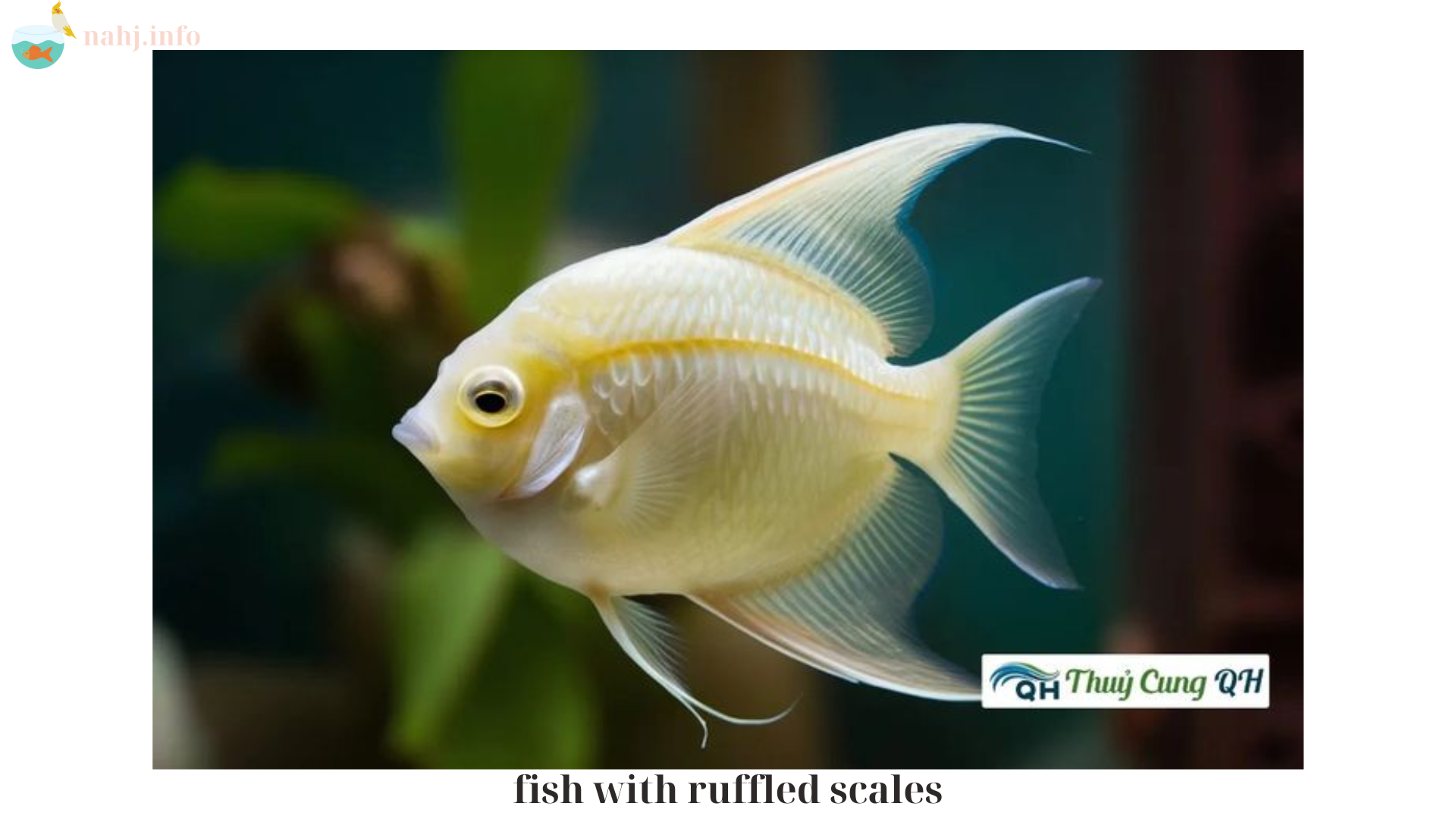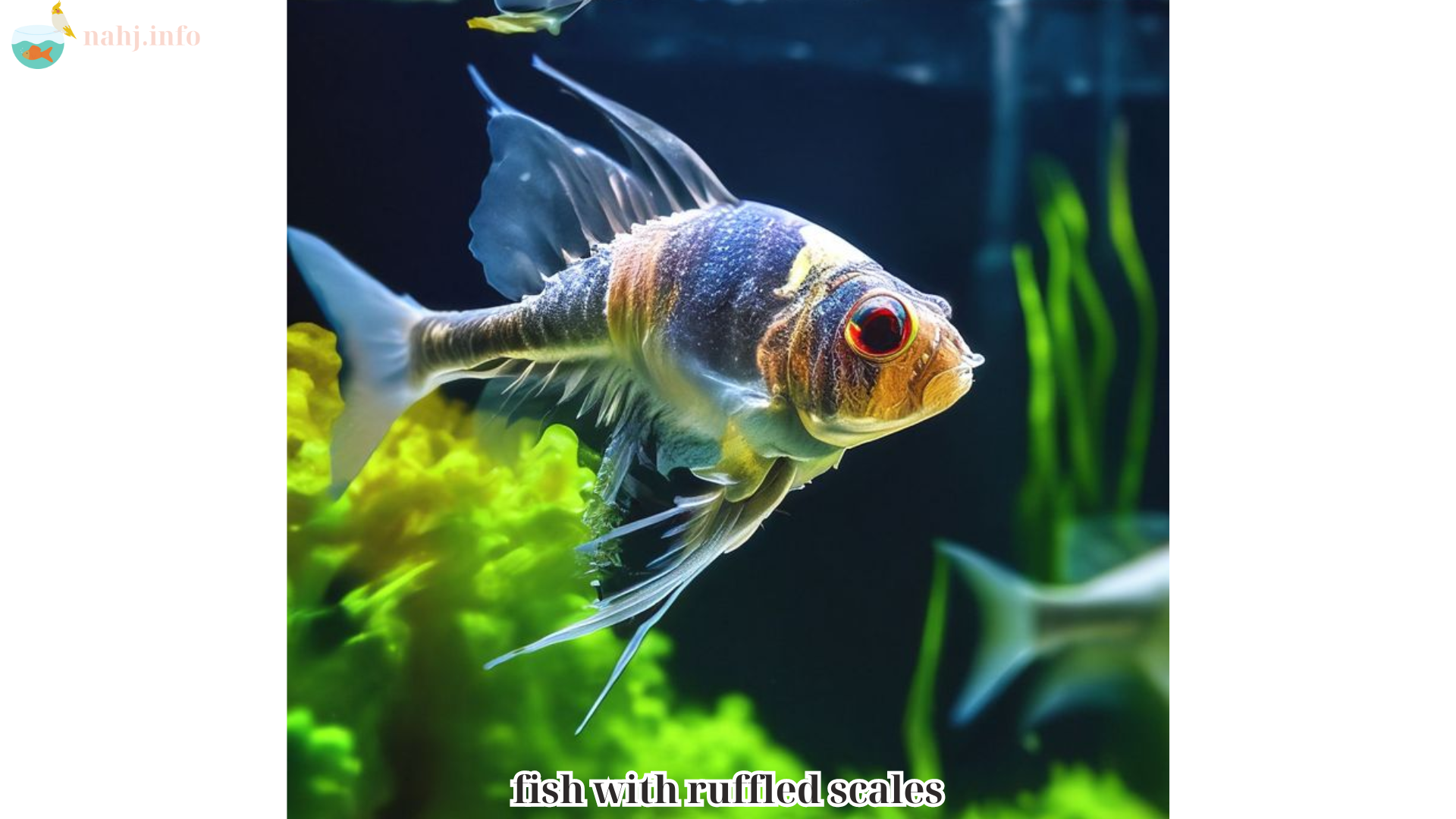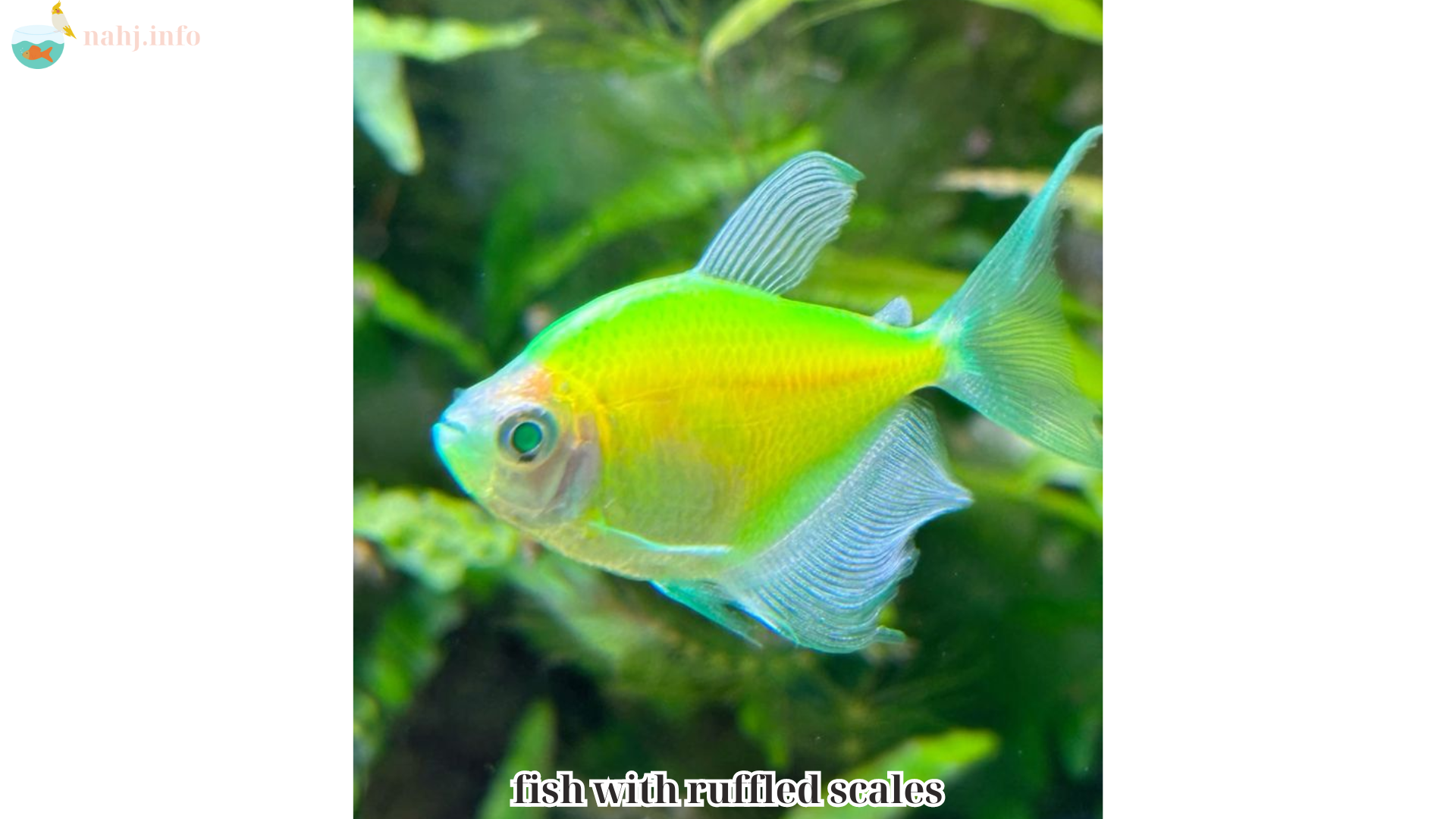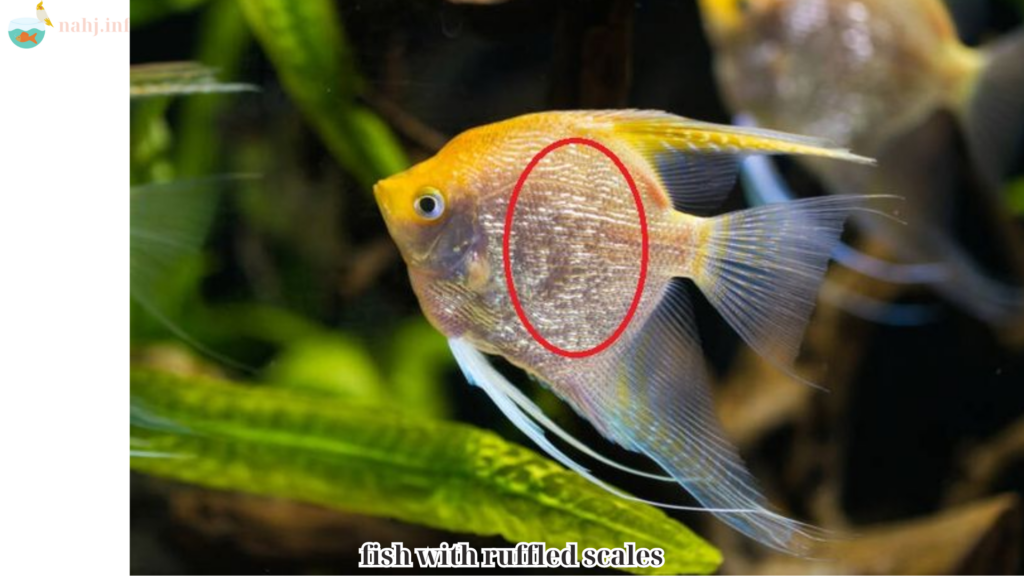When keeping fish, noticing abnormalities such as ruffled scales can be concerning. Fish with ruffled scales often exhibit this symptom due to various underlying health issues, ranging from infections to poor water quality. Nahj will help you understand the causes, prevention, and treatment options for fish with ruffled scales to ensure your aquatic pets remain healthy and vibrant.
Table of Contents
ToggleUnderstanding Fish with Ruffled Scales: Causes, Prevention, and Treatment
Ruffled scales in fish, also known as “pineconing” or “dropsy,” refer to the condition where a fish’s scales stick out away from the body, giving it a pinecone-like appearance. This symptom indicates a serious health problem that requires immediate attention.
Causes of Ruffled Scales in Fish

1. Bacterial Infections
Bacterial infections are one of the most common causes of ruffled scales in fish. The bacteria Aeromonas and Pseudomonas are often responsible for these infections. They can cause internal swelling and fluid buildup, leading to the characteristic pinecone appearance.
2. Poor Water Quality
Poor water quality can stress fish, weakening their immune system and making them more susceptible to infections. High levels of ammonia, nitrites, and nitrates, as well as improper pH levels, can all contribute to health issues, including ruffled scales.
3. Parasites
Parasitic infestations, such as those caused by flukes or protozoa, can also lead to ruffled scales. These parasites can damage the fish’s internal organs, causing fluid retention and scale protrusion.
4. Viral Infections
Although less common, viral infections can also cause dropsy. These infections are usually challenging to treat and often result in severe health complications for the affected fish.
5. Kidney Dysfunction
Kidney dysfunction or failure in fish can lead to an inability to regulate fluid balance in their bodies. This results in fluid buildup and the subsequent ruffling of scales.
Symptoms Accompanying Ruffled Scales

In addition to ruffled scales, fish with dropsy often exhibit other symptoms, including:
- Swelling or bloating of the abdomen
- Lethargy and reduced activity
- Loss of appetite
- Clamped fins
- Reddening of the skin or fins
Prevention of Ruffled Scales
1. Maintain Good Water Quality
Regular water testing and maintenance are crucial for preventing health issues in fish. Ensure your aquarium has the correct pH level, and monitor ammonia, nitrite, and nitrate levels regularly. Perform regular water changes and use a good filtration system to keep the water clean and free from toxins.
2. Quarantine New Fish
Quarantining new fish before introducing them to your main tank helps prevent the spread of diseases. A quarantine period of at least two weeks allows you to observe any signs of illness and treat them before they affect your other fish.
3. Provide a Balanced Diet
A nutritious diet strengthens the immune system of your fish, making them more resistant to infections. Feed your fish a balanced diet that includes high-quality pellets or flakes, supplemented with frozen or live foods.
4. Avoid Overcrowding
Overcrowding can stress fish and deteriorate water quality, making them more susceptible to diseases. Ensure your tank is appropriately sized for the number and species of fish you have.
5. Regular Tank Maintenance
Regularly clean your tank, including removing uneaten food and debris, and vacuuming the substrate. This helps maintain a healthy environment for your fish and reduces the risk of bacterial and parasitic infections.
Treatment Options for Fish with Ruffled Scales
1. Isolate the Affected Fish
If you notice a fish with ruffled scales, immediately isolate it from the main tank to prevent the potential spread of disease. Place the affected fish in a quarantine tank with optimal water conditions.
2. Antibiotic Treatment
For bacterial infections, antibiotics can be effective. Medications such as kanamycin, erythromycin, and tetracycline are commonly used to treat dropsy. Follow the instructions carefully and complete the full course of treatment to ensure the infection is fully eradicated.
3. Epsom Salt Baths
Epsom salt baths can help reduce swelling and fluid retention in affected fish. Dissolve 1-2 teaspoons of Epsom salt per gallon of water in a separate container and place the fish in the bath for 10-15 minutes. Repeat this process daily until symptoms improve.
4. Improve Water Quality

Ensure the quarantine tank has pristine water conditions. Perform regular water changes and maintain appropriate temperature, pH, and filtration to support the fish’s recovery.
5. Supportive Care
Provide supportive care by feeding the fish high-quality, easily digestible foods. Avoid overfeeding and remove any uneaten food promptly to maintain water quality.
6. Parasitic Treatments
If parasitic infection is suspected, use appropriate antiparasitic medications. Common treatments include formalin, copper-based medications, and praziquantel. Follow the manufacturer’s instructions and consult with a veterinarian if necessary.
7. Consult a Veterinarian
In severe cases or if the condition does not improve with initial treatments, consult a veterinarian who specializes in fish health. They can provide a more accurate diagnosis and recommend advanced treatments.
Conclusion
Fish with ruffled scales are often suffering from serious underlying health issues that require prompt attention. By understanding the causes, prevention strategies, and treatment options, you can help ensure the health and well-being of your aquatic pets. Regular tank maintenance, proper nutrition, and vigilant observation are key to preventing and managing dropsy in fish. If you notice any signs of illness, act quickly to provide the necessary care and improve the chances of recovery for your fish.

